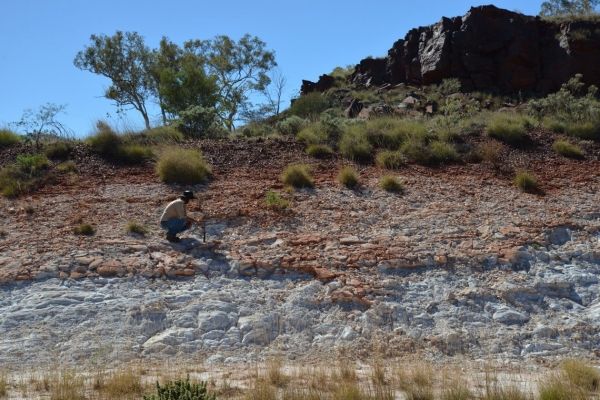A new analysis of 2.5-billion-year-old rocks from Australia finds that volcanic eruptions may have stimulated population surges of marine microorganisms, creating the first puffs of oxygen into the atmosphere. This would change existing stories of Earth’s early atmosphere, which assumed that most changes in the early atmosphere were controlled by geologic or chemical processes.
Though focused on Earth’s early history, the research also has implications for extraterrestrial life and even climate change. The study led by the University of Washington, the University of Michigan and other institutions was published in August in the Proceedings of the National Academy of Sciences.
“What has started to become obvious in the past few decades is there actually are quite a number of connections between the solid, nonliving Earth and the evolution of life,” said first author Jana Meixnerová, a UW doctoral student in Earth and space sciences. “But what are the specific connections that facilitated the evolution of life on Earth as we know it?”
Read more at: University of Washington
Roger Buick in 2004 at the Mount McRae Shale in Western Australia. Rocks drilled near here show “whiffs” of oxygen occurred before the Great Oxidation Event, 2.4 billion years ago. New analyses show a slightly earlier spike in the element mercury emitted by volcanoes, which could have boosted populations of single-celled organisms to produce a temporary “whiff” of oxygen. (Photo Credit: Roger Buick/University of Washington)


